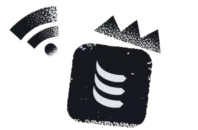DLR (Delivery Report) in the context of SMS (Short Message Service) refers to a notification sent by the SMS service provider to the sender’s system or application confirming the delivery status of a previously sent SMS message. DLRs are crucial for ensuring the reliability of SMS delivery and for tracking the success or failure of message transmission.
What information is typically included in a DLR report?
A typical DLR report includes the following information:
1. Message ID: A unique identifier assigned to the SMS message when it was sent. This ID is used to track the specific message in the delivery reporting process.
2. Recipient Number: The phone number or destination address to which the SMS message was sent.
3. Status: Indicates the current status of the message delivery. Common statuses include:
Delivered: The message has been successfully delivered to the recipient’s device.
Undelivered: The message could not be delivered to the recipient’s device.
Expired: The message delivery attempt has timed out without being successfully delivered.
Rejected: The message was rejected by the recipient’s network or device.
Queued: The message is still in the process of being delivered and is queued for transmission.
4. Timestamps: Timestamps indicating when various delivery events occurred, such as when the message was sent, when it was delivered, or when delivery attempts failed.
5. Error Codes (if applicable): In cases where the message delivery fails, error codes may be provided to indicate the reason for the failure. These codes help diagnose issues such as invalid recipient numbers, network errors, or message content restrictions.
DLR reports are crucial for monitoring the performance of SMS messaging campaigns, ensuring timely communication with recipients, and troubleshooting delivery issues. By receiving DLRs, senders can track the status of their messages in real-time and take appropriate action based on the delivery outcome.
